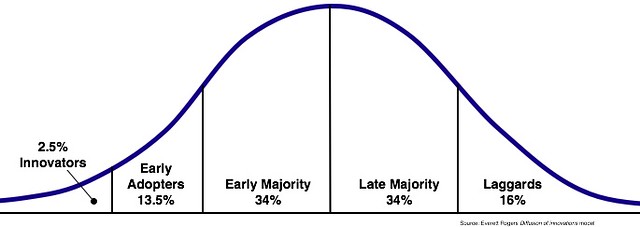Understanding and knowing WHO your customers are, is the key to successful marketing. Making a business more customer-centric is a way to improve your bottom line considerably. Simply, no customers, no business.
Think beyond what they might value in YOUR business and instead look at the other values they hold in their life. Find their needs and wants, the more you understand your customers the better you can target your products towards them.
Why is understanding your customer important for businesses?
By understanding customers on a deeper, more meaningful level, you can connect and relate to them which will increase loyalty, repeat purchases and brand advocacy.
Did you know that loyal customers end up being worth ten times their original purchase?
Past customers have a 65% chance of converting compared to a 13% chance for new prospects.
By paying attention to your customers’ needs, you can reduce your marketing costs while bringing in more sales and profit.
You need to know who to target in order to divide and define your target market. To do this, we use the process of segmentation.
Segmentation
Segmentation is the process of dividing customers with different needs and preferences into smaller groups with similar needs and preferences.
There are four types of segmentation. Demographic, Geographic, Behavioural, and Psychographic.
- Demographic – Segments are based on customer data either observable or through reported data. This can include sex, nationality, marital status, and age.
- Geographic – This is all about location, such as a person’s country and postcode. For more detailed information, you can look at the local businesses in the area and also if it is a rural or urban area.
- Behavioural – Behavioural segmentation uses the behaviour of customers. It is generally done by reviewing purchasing habits, usage rate (frequent or infrequent), and purchasing history.
- Psychographic – This is similar to demographic as it is based on individual customer data however is the hardest to undertake as the information is not readily available. Psychographic segmentation uses lifestyle, personality traits, values and beliefs to understand customers more closely.
Segmentation allows your content to be personalised and tailored for specific audiences.
Personalisation is key!
A recent study found that 90% of consumers found personalisation appealing, while 80% said they’d be more likely to do business with a company that offers personalised approaches?
Customer-centric businesses tailor their messaging, products and content to suit their target audience, 58% of content marketers said audience relevance was the biggest contributor to success.
By creating content that suits your audience, the customer will not be wasting their time on low-quality content and therefore will not need to look elsewhere. It can only take one bad customer experience to make them go elsewhere for their needs.
The Adoption curve (Rogers’ bell curve) is a guide that demonstrates audiences adoption of a new idea. It provides information on how different groups of people react. Finding where your target audience fits can show you how to efficiently market your business to them.
Rogers’ bell curve
Rogers’ bell curve shows the adoption of an idea by 5 different customer groups.

Where does your businesses audience fit in the Adoption curve?
- Innovators (2.5%): These are the first people to adopt an innovation. Generally, with low risk tolerance, these people often adopt technologies that can ultimately fail but have financial wealth and social class to limit their loss. Innovators usually have close contact with other innovators and easy access to scientific information.
- Early Adopters (13.5%): This is the second-fastest category of individuals who adopt an innovation. They tend to be young; these individuals have a high degree of opinion leadership and will have more discretion in their adoption choices to maintain this.
- Early Majority (34%) – Individuals in this category adopt an innovation after a varying degree of time. Their adoption time is significantly longer than the innovators and early adopters. They may hold some opinion leadership and be influenced by the early adopters.
- Late Majority (34%) – Individuals in this category will adopt an innovation after the average member of the society. With high scepticism, these people are often of lower-income and social class, with little to no opinion leadership.
- Laggards (16%) – Individuals in this category are the last to adopt an innovation. A refusal to change and a focus on traditions causes these people to refrain from adopting new technology.
Knowing which customer segments your business and products will appeal to, will allow you to personalise your content to the needs and wants of the ideal consumer.
A marketing strategy may work for an innovator but not the early majority, if you do not focus on the best audience for your business, you will lose profits and overspend on marketing.
If you need help identifying your ideal customer through your marketing, book now for a discovery call with CREATIVE in TiME to see how we can support your business.




0 Comments